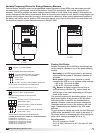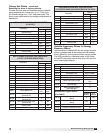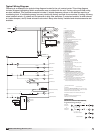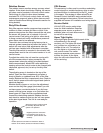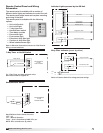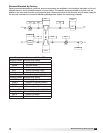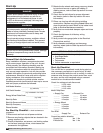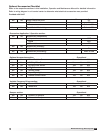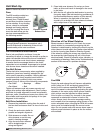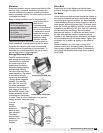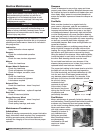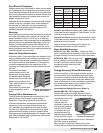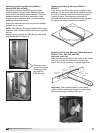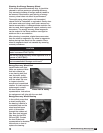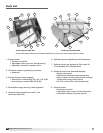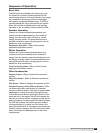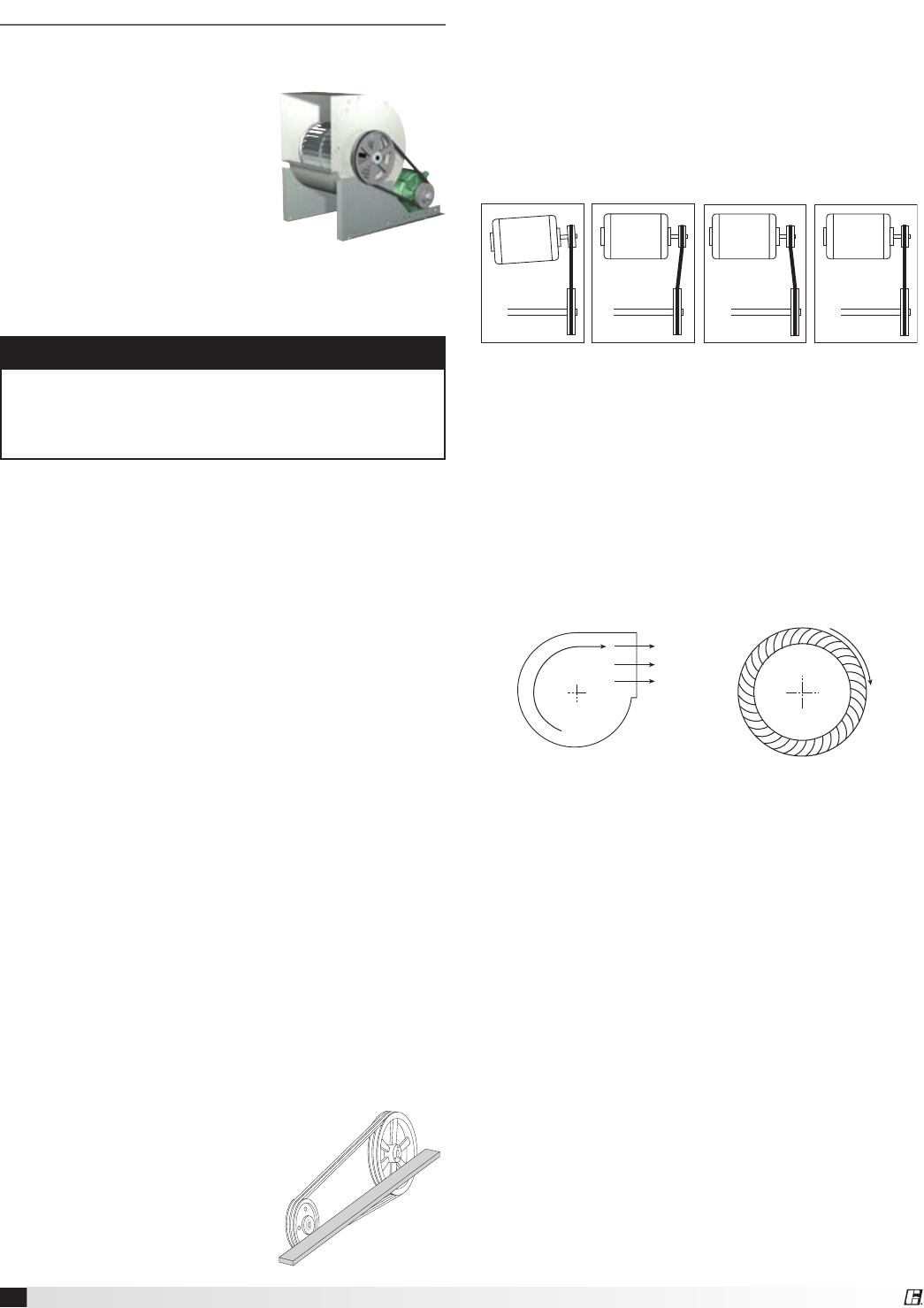
24
Model ERV Energy Recovery Unit
Unit Start-Up
Refer to Parts List section for component locations.
Fans
The ERV models contain two
forward curved (supply &
exhaust) fans. These forward
curved fans should be checked
for free rotation. If any binding
occurs, check for concealed
damage and foreign objects
in the fan housing. Be sure to
check the belt drives per the
start-up recommendations in
the following section.
CAUTION
When operating conditions of the fan are to be
changed (speed, pressure, temperature, etc.),
consult Greenheck to determine if the unit can
operate safely at the new conditions.
5. Place belts over sheaves. Do not pry or force
belts, as this could result in damage to the cords
in the belts.
6. With the fan off, adjust the belt tension by moving
the motor base. (See belt tensioning procedures in
the Routine Maintenance section of this manual).
When in operation, the tight side of the belts
should be in a straight line from sheave to sheave
with a slight bow on the slack side.
Fan Performance Modifications
Due to job specification revisions, it may be
necessary to adjust or change the sheave or pulley to
obtain the desired airflow at the time of installation.
Start-up technician must check blower amperage
to ensure that the amperage listed on the motor
nameplate is not exceeded. Amperage to be tested
with access doors closed and ductwork installed.
Fan Belt Drives
The fan belt drive components, when supplied by
Greenheck, have been carefully selected for the
unit’s specific operating condition. Utilizing different
components than those supplied could result in
unsafe operating conditions which may cause
personal injury or failure of the following components:
•FanShaft •Bearings •Motor
•FanWheel •Belt
Tighten all fasteners and set screws securely and
realign drive pulleys after adjustment. Check pulleys
and belts for proper alignment to avoid unnecessary
belt wear, noise, vibration and power loss. Motor and
drive shafts must be parallel and pulleys in line (see
diagrams in this section).
Belt Drive Installation
1. Remove the protective coating from the end of
the fan shaft and assure that it is free of nicks and
burrs.
2. Check fan and motor shafts for
parallel and angular alignment.
3. Slide sheaves on shafts. Do not
drive sheaves on as this may
result in bearing damage.
4. Align fan and motor sheaves
with a straight-edge or
string and tighten.
Belt Span
Deflection =
Belt Span
64
WRONG WRONG
WRONG CORRECT
WRONG WRONG
WRONG CORRECT
F A N
MOTOR
F A N
MOTOR
Forward Curved
Exhaust Fan
Direction of Fan Wheel Rotation
Blower access is labeled on unit. Check for proper
wheel rotation by momentarily energizing the fan.
Rotation is determined by viewing the wheel from the
drive side and should match the rotation decal affixed
to the fan housing (see Rotation Direction figures).
If the wheel is rotating the wrong way, direction can
be reversed by interchanging any two of the three
electrical leads. Check for unusual noise, vibration, or
overheating of bearings. Refer to the Troubleshooting
section of this manual if a problem develops.
Fan RPM
Supply fan and exhaust fan will have an adjustable
motor pulley (on 15 HP and below) preset at the
factory to the customer specified RPM. Fan speed
can be increased or decreased by adjusting the pitch
diameter of the motor pulley. Multi-groove variable
pitch pulleys must be adjusted an equal number
of turns open or closed. Any increase in fan speed
represents a substantial increase in load on the
motor. Always check the motor amperage reading
and compare it to the amperage rating shown on the
motor nameplate when changing fan RPM. All access
doors must be installed except the control center
door. Do not operate units with access doors open or
without proper ductwork in place as the fan motors
will overload.
R
o
t
a
t
i
o
n
R
o
t
a
t
i
o
n
R
o
t
a
t
i
o
n
R
o
t
a
t
i
o
n
Backward Inclined
Forward Curved
Airflow
Airflow
R
o
t
a
t
i
o
n
R
o
t
a
t
i
o
n
R
o
t
a
t
i
o
n
R
o
t
a
t
i
o
n
Backward Inclined
Forward Curved
Airflow
Airflow



